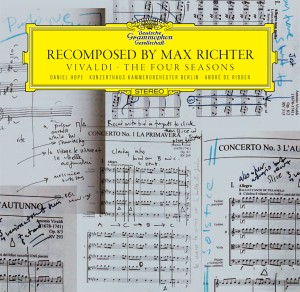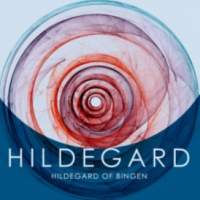
Two new albums from big labels — Vivaldi’s Four Seasons recomposed by Max Richter on Deutsche Grammophon, and Steview Wishart’s Vespers for St Hildegard on Decca — arouse such conflicting emotions and impressions that I don’t know whether to frown or smile.
- Classical Music 101: What Does A Conductor Do? - June 17, 2019
- Classical Music 101 | What Does Period Instrument Mean? - May 6, 2019
- CLASSICAL MUSIC 101 | What Does It Mean To Be In Tune? - April 23, 2019
There’s nothing new about composer transforming cherished old works to suit the tastes of the day. I’ve given both albums a chance by listening to them several times, at different times of day and the week, in different moods and under different conditions. Yet one question keeps coming back: What exactly is the point?
Love is part of the impulse, I’m sure, which is manifest in the act of appropriation — much like, say, making a sushi pizza.
Another factor must be a desire to overcome the modern gulf between composition and interpretation in art music.
On one hand, I think we’re frequently too reverential toward the music in the Western canon. But on the other, some works are so beautifully wrought that I don’t see how tampering with them makes them more accessible to a non-classical listener. Rather than extending the immortality of a masterpiece, these efforts, in my opinion, ground them in the here and now, thereby making them perishable.
Yet I don’t want to condemn the efforts, especially when they are as fine as these two.
 DANIEL HOPE
DANIEL HOPE
Recomposed by Max Richter (Deutsche Grammophon)
The popular violinist Daniel Hope has gamely joined with the Konzerthaus Kammerorchester Berlin and conductor André de Ridder in British composer Max Richter‘s reimagining of Antonio Vivaldi’s most famous works, the four violin concertos collectively known as The Four Seasons. (It’s probably the most popular Baroque music of our times.)
The real title should be “Fleeting Glimpses of the Four Seasons,” as Richter plays the role of the sidewalk caricaturist, finding the half-dozen quick pen-strokes that convey the essentials of the concerto.
He uses a total of 13 violin figures that anyone with even a passing acquaintance with Vivaldi’s original would instantly recognize, setting them inside a wash of repeating harmonic textures that are part acoustic, part electronic. There is even a ghostly harpsichord that rises out of these undulating tonal waters in the Winter section.
A casual listen might make one think that the violin solo portions are a direct lift from Vivaldi, but they’re not. The music is in the public domain, but Richter has acted like someone careful to change just enough notes and rhythms to be able to say this is not Vivaldi but me.
The result is familiar and strange, compelling and alienating, definitely post-modern and emphatically not Baroque. It is done with enough care and polish and craft to make an impression, even if it’s a conflicted one.
You can find out a little bit more about the album here.
Here is the promotional video for the album:
 SINFONYE
SINFONYE
Vespers of St HIldegard (Decca)
British composer Stevie Wishart has constructed a Vespers service of sung prayers, responses, Psalms and other canticles from the music and poetry of the recently canonized abbess Hildegard of Bingen (1098-1179). Some of the music has remained untouched. Other sections are embellished with extraneous sounds to, presumably, give it a bit of atmosphere.
There are two entirely new pieces:
“Azeruz” works as a sort of secular intermezzo built on Hildegard’s own language, which reads like a list of ingredients for an alchemist’s brew. The percussion-dominated accompaniment sounds like it belongs more to an episode of Survivor than a meditative space.
The closing “Zuuenz” uses bells set within a dancey-electronic party piece that made me imagine a procession of nuns heading down a dark alleyway from the abbey to a dance club.
The whole affair is sung by Sinfonye, an all-female vocal-improvisation sextet founded by Wishart 25 years ago. At times they sound beautifully balanced and polished. At others, there’s a folky edge to the voices.
As in the Richter disk, the production values — overseen by pop producer Guy Sigsworth — are excellent.
But what does it all mean?
You can explore this album more here.
John Terauds
- Classical Music 101: What Does A Conductor Do? - June 17, 2019
- Classical Music 101 | What Does Period Instrument Mean? - May 6, 2019
- CLASSICAL MUSIC 101 | What Does It Mean To Be In Tune? - April 23, 2019



